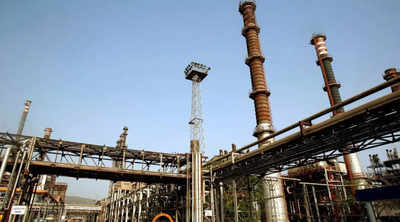
New Delhi: India’s crude oil price on Thursday rose to $121.28 a barrel, the highest since March 9, 2012, when it touched $125.13. This has pushed the monthly average in June to $118.34 a barrel, last seen in April 2012 when the price average was $118.64.
Decade-high crude oil costs will further strain the bottom line of state-run retailers as they keep pump prices stable and make the government’s fiscal headroom tougher, adding to inflationary pressures and raising subsidy and oil import bills. which affect the macro-economic parameters.
India imports 85 percent of its oil. The Indian Basket, or the blend of crude oil purchased by India, follows global benchmark Brent, which has a 24% weightage in the mix.
Brent has been rising since last year as demand picks up and supply remains tight, essentially due to the OPEC+ grouping’s refusal – and partly inability – to pump volume to the desired level.
While prices jumped after February 24 when the Russia-Ukraine conflict broke out, government retailers did not increase pump rates – under unofficial government advice – to match the pace of oil price hikes. . With this, the under-recovery on petrol and diesel has gone up to Rs 18 and Rs 21, respectively.
This has skewed the fuel retail market as private retailers such as Reliance Industries and Naira are letting their pumps dry or setting retail prices higher than state-run companies to avoid supply as dealers sell consignments. has refused. Due to this there has been an increase in demand at petrol pumps of government companies. This has led to sporadic reports of pumps drying up in the hinterland due to delayed replenishment.
The pump price had remained stable for 137 days in 2020 before the Center cut excise duty on petrol and diesel by Rs 5 and Rs 10 respectively on November 4. Since then the prices were hiked by Rs 10 per liter before the Center cut the excise duty again. On May 22, a discount of Rs 8 on petrol and Rs 6 on diesel. Prices have remained stable since then and are in line with $85 a barrel of crude.
The high oil import bill affects the government math by widening the current account deficit by raising the demand for the dollar, along with fuel and fertilizer subsidy bills, thereby impacting the rupee. This has a cascading effect on inflation, which is already at a high of 7.8%, and has an impact on other parameters such as interest rates.
FacebookTwitterinstagramKu APPyoutube